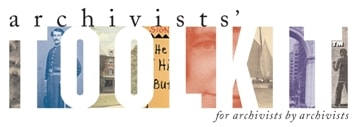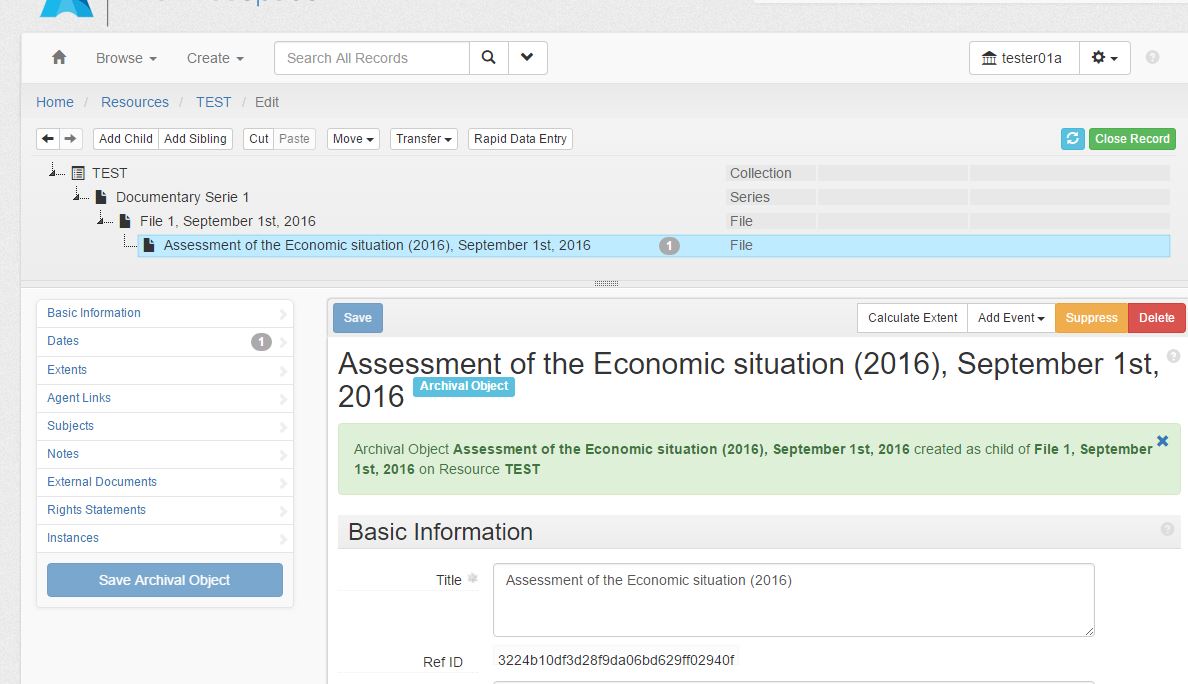ArchivesSpace is an open source web application for managing archives information. Supports functions to manage archives fonds and web publishing to allow online search.

ArchiveSpace is a Project that integrate the Archivists' Toolkit and Archon into a single application in order to increase overall functionality and the sustainability of the these tools. From Archivists' Toolkit takes the life-cycle data model, compliance to community standards and the import,export and reports tools; from Archon takes the web access to descriptions of archives, that's online fonds consultations.


The ArchivesSpace core functions are:
- accessioning
- description and arrangement of processed materials
- management of authorities
- management of places
- management of rights
- reference service
- administrative reports (Pdf format available)
- multi repository and multi fonds
- metadata generation EAD, MARCXML, MODS, Dublin Core, and METS
- import tools (marcxml y csv)
System Requirements
- Java 1.6 or higher; Java 1.7 or 1.8 recommended.
- At least 1024 MB RAM allocated to the application
- A web browser
The requirements above are indicated for a local use of the application (Windows, Mac OS X), but only for testing purposes. For production purposes a Mysql database is required, and the server platform would require a dedicated server (Cloud for example), using a linux distribution (Red Hat, Ubuntu).
It sounds complicated? Don't worry, from Cultural Hosting we offer hosting service, updates, backups, and support for ArchivesSpace.
Inside
ArchivesSpace uses 4 interfaces to manage the application:
-
Port 8081: Public interface or front-end
-
Port 8080: Staff interface or back-end
-
Port 8089: API interface
-
Port 8090: Solr interface
Solr is an open source enterprise search platform, based in the javascript library of Apache Lucene (open-source information retrieval software). AtoM2 uses Elasticsearch for this function.
By default there are 2 languages for Public and Staff interfaces, English and Spanish; that's fine, but there are some missing language chains in spanish. We will show you in a next post how to translate those chains, and how to make a global translation for a third language.
The description template tool for adding resources, follows DACS (Describing Archives: A Content Standard), the northamerican description standard, which is compliance with the General International Standard Archival Description (ISAD[G]), with ISAAR (CPF) for authorities and ISDF for functions.
It is a very usefull tool for managing and importing data online, allowing a very fluid navigation in the ones we could call "tags" (subjects, author, fond, typology) where the contents are filtered and related, indicating the number of existing resources.
Those projects that follow ISAD (G) and the ISO standards (ISO 15489 e.g.), will miss the priority of the logic structure of the Classification Scheme. The scheme must be manually built (there is no import tool to date). Besides it not possible to add new description levels from the level that they belong to, like you can do in Ica-Atom 1.3.2 y AtoM2, the descriptions must be created from the manager classifications.
The digital objects can be incorporated when creating a resource or using the menu area dedicated for the purpose, this last option requires having to link them by editing the level description in each case.
One the prominent features due to his pros and cons, is that the digital objects are not stored in ArchivesSpace, are managed by external URI (Uniform Resource Identifier, similar to URL).
PROS: The external storage allows us to use a independent service, such as Amazon S3, Google Drive or Dropbox (generally any alternative that allows to render documents in the browser); that means saving space and money. Furthermore we ourselves can configure the folder schema, correlating the folder levels with the classification schema of the archive fond.
CONS: we need to manage uploads to the external storage and later insert or edit the URI of each item in ArchivesSpace, so and if you decide to change your storage provider, you must modify the URI of all resources (luckily there is a tool to automate the process, but not without its complexity).
Conclusion
From Cultural Hosting we recomned to make a preliminary analysis of the ArchivesSpace's functions to identify which of them we are going to use. You must evaluate:
-
If your are going to use the application to make programmed diffusion of contents using the staff interface, or you are going to dump existing records by scheduled import processes.
-
Which level of description have the documents that we are going to manage within ArchivesSpace, because the application has required fields. So in practice, we need at least the requires fields of ISAD (G); if the descriptions have more fields, then is necessary to revise the concordances of our fields and ArchivesSpace fields, as it´s description template uses DACS. How We have said, DACS is compliance with ISAD (G), as virtually the only difference is the absence of the field "Level Description".
Finally, here is a link where you can take a look to our ArchivesSpace services:
Hosting and suppport for ArchivesSpace

Tips: for those users that are not working with the northamerican Archiving perspective, the Glossary of the Society American Archivist will be usefull. We leave the link below:
http://www2.archivists.org/glossary
For users interested in ISAD (G ) and DACS, here are the links to download:
DACS. Second edition,2013 (English content).-
http://files.archivists.org/pubs/DACS2E-2013_v0315.pdf
ISAD (G). Second edition, 2000 (English content).-
http://www.icacds.org.uk/eng/ISAD(G).pdf
